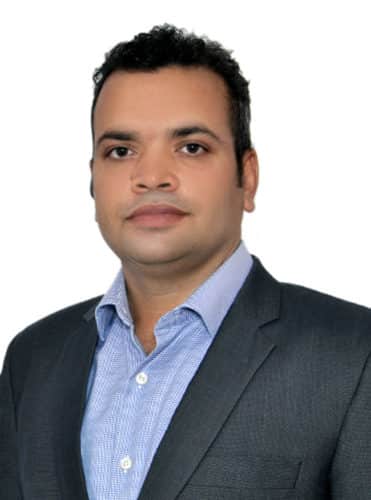We live in a world which is run on memory and storage, a day without it would be a nightmare. Kingston has been one such company that has been providing its memory products for the past 30 years. Kingston Solutions Inc (KSI), a subsidiary of Kingston Technology Corporation is an established global provider of embedded memory and storage solutions. KSI has recently forayed into India to address the growing needs of the embedded market in India. To know more on the global memory trends, embedded market and KSI’s business strategy in India, Ankita KS from EFY group spoke to Arun Kumar, Indian Sales Director, Kingston Solutions and Anand Jayapalan, Vice president, Kingston Digital. Excerpts follow..
Q: What is new that Kingston is bringing to the Indian market?

Most of you all would have heard of Kingston as a retail brand, mostly in the memory card market or USBs, but we are bigger than that now. Kingston has a strong portfolio of products that cater to a broad range of end markets (spanning PC, Servers, Gaming, Mobile, Connected Home, IoT, etc.), backed by strong manufacturing, global supply chain, and logistics presence. Besides having a strong retail presence for cards and USBs, we are also a global leader in solid-state drives (SSDs) for the PC, Enterprise and Cloud Datacenter market segment. Kingston also provides supply chain and logistics support to several Tier-1 OEM customers in addition to doing contract manufacturing of SSDs. With a large channel and customer base that Kingston has built globally over the past 30 years, KSI the embedded business unit of Kingston Technology Corp is focused on bringing its strong embedded portfolio to cater to the growing Indian market esp. mobile phone, wearables, set-top box, point of sale and other emerging market segments.
Q: What do think about the Indian market today? What will be your strategy in India?

Over the past 10 years, KSI has been successful in penetrating some of the large global markets. For example, in China, we have a good presence with several OEMs, ODMs and IDHs. Currently, with initiatives like “Make in India”, we believe it is the right time for Kingston to leverage the learnings we have had in other markets like China and participate in the explosive growth in India. While there are learnings from adjacent markets that we can leverage, there will be nuances unique to the Indian market esp. in terms of product attributes, pricing, supply chain, etc. that we need to learn and adapt to. Our primary objective was to come down and educate the India ecosystem including customers, ODMs, IDHs, partners, distributors as to who we are, what we do, and share our plans, both near term and the long term.
Phase one of our plan is to establish a local presence for sales and support, learn and understand the customer/end market needs, and assess the “make in India” policies so our strategy can be aligned with what India government is looking for. We’re a privately held company and have set very realistic goals for the region. We want to do things right in an organized, systematic and scalable manner. So, we started out with establishing a local sales presence, followed by signing Arrow as our distributor in India.
Q: In terms of technology trends, what do you see, especially in the Indian market, when compared to globally, what does that we are lacking or what does that you feel needs to be done more so?
There are two ways to look at. The one is the technology that is required for a market like India and how it aligns with the global technology trend. The second is you must align with the resources and capabilities that India has currently within the embedded ecosystem. These are two completely different but related topics. Let me talk about the first one. For example, the flash industry in India is growing rapidly. These numbers of may scare you, but the global supply of NAND flash in the current year 2019 is projected to be approx. 300 billion gigabytes. Analysts expect the flash bit growth over the upcoming years at approx. 30% year over year. This requires significant investments made by NAND flash producers esp. to transition to next-gen NAND technology nodes, which drive bit growth as well as cost reduction compared to previous gen. technology. As a result, the NAND flash producers want to see a quick return on these large investments. So, with each new generation of NAND technology, the minimum chip densities are getting larger which supports the overall theme within the advanced global economies. In other words, the min storage capacity in a smartphone within mature economies is 64Gb and higher, mostly 128GB and 256GB driven by the exploding content, video-on-demand consumption, 4K media, etc.
The lowest capacity of yesterday is no longer there today and the highest capacity of yesterday is today’s lowest capacity. However, in India where approx. 160Mu smartphone shipments are being projected in the current year 2019, we still have approx. 500 million feature phone users today, that is projected to grow to 800 million+ in the next 3 years. The above landscape offers a great platform for Kingston to help address the entry/mid-tier smartphone segment where the storage capacity requirements are significantly lower than the rest of the world while the vols are significant. Given the misalignment between the general technology roadmap trend (described above) and the requirements of the emerging markets in India, we don’t see a lot of vendors who cater to this segment today. This is where we, Kingston with a “channel first” focused strategy, believe we have a value proposition that can help address the needs of the growing Indian market.
Q: Could you brief about the market challenges especially in India with respect to NAND and DRAM?
The NAND flash growth within devices (smartphones, set-top boxes, point of sale, smart watches, smart meters, etc.) that enable India’s digitisation plan provides a significant opportunity. At the same time, this massive opportunity also poses a major challenge for memory/storage solutions vendors given the unique requirements that is local to India e.g. the average capacity that’s required for entry-level smartphones, set-top box and wearables is approx. 8 gigabytes (GB). This 8GB capacity point is almost obsolete in most parts of the world besides the fact that it is produced on a technology which is three to five years old. The NAND flash manufacturers, seldom carry these older technologies and even if they carry, support a limited amount of supply within their fabs. The biggest challenge most vendors face is supporting these technologies in vols and most importantly in a cost-competitive manner that meets the India market needs. This is a major challenge and calls for a very focused strategy to address the market needs in India. Given our embedded presence in China and other emerging economies which went thru a similar transition, Kingston is well positioned to address the needs of the embedded market in India.
The DRAM world is even more complex because in the flash you have seven to eight semiconductor vendors who manufacturer flash. But in the case of DRAM, it is only three which makes it even more challenging. Hence the challenge I personally see is how to address this important market that is significant in size esp. with technologies that are a generation or two old, at large scale in a cost-competitive manner. I also expect some manufacturers will adapt and will start to carry the legacy technologies longer than they currently carry thereby addressing the needs of growing markets such as India.
Q: Any innovation strategy to compete with your competitors?
At Kingston, we don’t own fabs. Our vendors, who are large semiconductor manufacturers are our partners. For example, we buy NAND flash and DRAM wafers from our partners like Toshiba or Intel or Micron and we build and test Kingston branded products using those technologies in-house. We are always looking for the best technologies that address the needs of specific application/end market segments.
So in a lot of ways we are constantly looking to push the envelope to see what the market requires for specific products and applications along with the differentiation that’s required in the firmware for a specific application. That’s how Kingston works.
Q: What is your business plan in India say for the year 2021?
India is going through urbanising of the rural area and it’s a big initiative. For example, getting access to WiFi or connectivity which 80 per cent of the country doesn’t currently have requires a lot of processing at the Edge. A lot of this is going to happen in the next, three to five years. You will see the connectivity in terms of cell phone, smart speakers, set-top boxes, point of sale and everything else. What the success for Kingston would be in the next year or two would be to actually enable and have a good footprint of our memory and storage solutions serving all those markets, thereby participating in the urbanisation of rural India.






